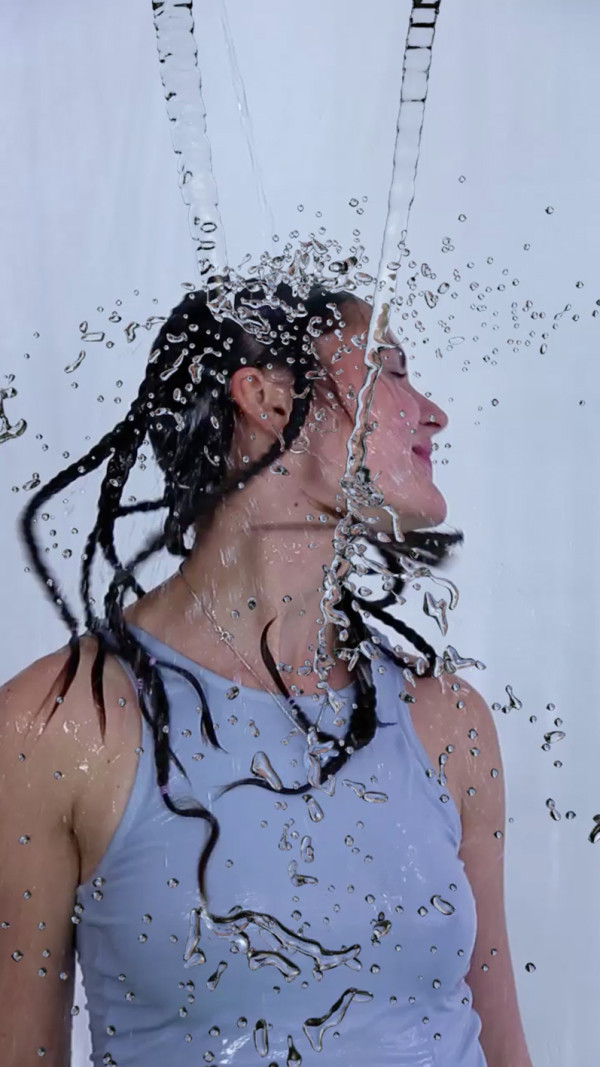The desire to enter a space created by our own fantasies, a virtual cosmos, is nothing new. It probably emerged hand in hand with our dreams for a better world. These days, virtual reality seems to be ubiquitous: We watch films with 3D glasses. We explore 3D maps of all the major cities using our smartphones. We even play games using head-mounted displays (HMDs).
Since the invention of the HMD and its penetration of the consumer market over the last few years, the technical development of virtual reality has fundamentally changed the moving image. Artists, too, are experimenting with the possibilities and limitations of virtual reality. The younger generation in particular, including artists like Petra Cortright, Adham Faramawy, Lawrence Lek and Jordan Wolfson to name but a few, are using VR almost as a matter of course as a “tool” alongside traditional media.
The developments are thrilling and fast
In 2017 the online art institution Rhizome and the New Museum in NYC presented a VR exhibition in the form of a free app entitled “First Look: Artists’ VR.” The artists represented were Peter Burr and Porpentine Charity Heartscape, Jeremy Couillard, Jayson Musson, Jon Rafman, Rachel Rossin and Jacolby Satterwhite, and their works were created specifically for the exhibition. Meanwhile, the Zabludowicz Collection opened “360,” first permanent virtual reality gallery in London in 2018, while the “curatorial and research hub” Acute Art, as it calls itself, produces works by renowned artists in VR, AR (augmented reality) and MR (mixed reality).

Adham Faramawy, Sparkling Life, Pure Water, Healthy World, production still, 2014, Courtesy the artist, Image via www.adhamfaramawy.com

One of them is Nathalie Djurberg and Hans Berg’s “It Will End in Stars” which, alongside the Schirn, will soon be on view in the VR and AR section “Electric” at Frieze New York. The developments are thrilling and fast. In contrast to computer games, where we always had to shift from the physical to an artificial world to have experiences, in art this is relatively new. Be it painting, sculpture or later installation, art has long been closely connected to the physical space.
“Art within the space” could be read with all the senses and perceived collectively. With VR works, this does not apply. The physical world fades out. The influences of the outside world are blocked. Space and time become one manipulable variable. As recipients, we enter, observe and experience the virtual work individually. At “points of interest” (POIs) we are prompted to engage in interactions that we can execute with motion controllers. Similarly to an installation in the physical space, we can decide when and for how long we want to look at something. But what exactly defines an experience in virtual reality? Where does it begin? Where does it end? On a basic level, the word “virtual” means “implied, possible.” Virtual reality is therefore neither a new invention nor is it tied to digital technologies.


Rather, it is closer to the power of imagination, which is based on perception. It is not a utopia, but rather an idea that opens up possibilities and develops in dialog with reality. In the VR work “It Will End in Stars,” Nathalie Djurberg’s characteristic figures, her texts and the soundtrack by Hans Berg are transferred to the new medium. The work begins in a dense forest. The presentation is black and white and reminiscent of Djurberg’s early charcoal animations such as “My Name is Mud.” You enter a glade, then a small wooden hut. The wolf, fairytales’ personification of evil, sits inside the hut in front of a glowing fire. He is talking to himself. Around him are various objects symbolically placed as if in a still life. A skull. A winged horse. A gramophone.
When you hand him a box of cigarettes, he pleadingly asks for a lighter. If you’re not fast enough, he angrily hurls the cigarettes back to where they were. If you find one of the points of interest, the bleak animation is suddenly filled with pastel-colored, kaleidoscope-like loops. Handwritten text hangs fragmentarily in the air, conveying the wolf’s thoughts as he reacts to the gaze and movements of the person interacting with him.



Prompted by the unconventional form of observation, you feel a certain unease, overwhelmed by the situation, like a voyeur, ashamed almost. And that’s fine. After all, this is the aim of all the works by Djurberg and Berg. The artists reach deep into the recipients of their works. They provoke, irreverently bore into their thoughts, present horrors and then leave one entirely alone.
One might currently criticize VR experiences for lacking the integration of the senses with physical movement. Yet it is specifically in this curtailment of the senses, and with it the disrupted sense of equilibrium, that the strength of this work lies. A loss of orientation. Shock. Uncertainty – both physical and mental. Nausea, even. Right up until you are sucked between the legs of the female cyclops. The universe as a friendly gesture. Come down. Reality and virtual reality will continue to get ever closer, to intertwine and merge with each other, until at some point we no longer ask whether we are here or there, but rather do some things here and some there almost as a matter of course.


In the case of Djurberg and Berg’s works, total immersion would be achieved if we were able to touch Djurberg’s sculptures too, to smell them, to rub up against their surfaces, to grope the creatures, talk to them, or stand protectively in the way to shield them. The remarkable thing about their works, however, is that we experience a kind of immersion not only in the VR work “It Will End in Stars,” but also in the midst of their emphatic installations combining projection, sculpture, sound, light and the overall architecture of the exhibition space.
